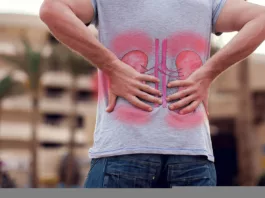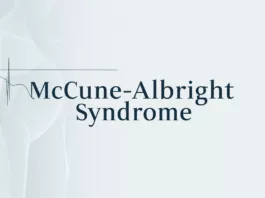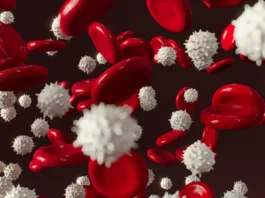What is Groin Pull?
A groin pull, also known as a groin strain, is a muscle injury that affects the groin muscles. It typically occurs due to overuse, such as from sports activities, leading to the overstretching or, in severe cases, tearing of muscle fibers. The groin area comprises various muscle groups, but the adductor muscles are most commonly involved in these injuries. Hip and groin injuries are prevalent among collegiate athletes. According to a study, adductor tears account for 24.5% of all groin injuries.1Kerbel, Y. E., Smith, C. M., Prodromo, J. P., Nzeogu, M. I., & Mulcahey, M. K. (2018). Epidemiology of hip and groin injuries in collegiate athletes in the United States. Orthopedic journal of sports medicine, 6(5), 2325967118771676. Groin pull causes pain, stiffness, and difficulty in movement. Repetitive stress (running, twisting, etc.) and sports injuries contribute to groin strain. Such types of strains aren’t serious and, thus, mostly recover without medical intervention.

Groin Anatomy
Before explaining groin pull, we highlight the muscle anatomy of the region. The groin connects the lower part of your abdomen to the thighs. The various muscles that combine to form your groin include:
- Lower Abs: The lower abdominal muscles include the rectus abdominis and the internal oblique muscles.
- Adductor Muscles: Six adductor muscles, including the brevis, longus, Magnus, gracilis, obturator, and pectineus, are present in the hip and thigh region. They are most commonly involved in groin strains.
- Iliopsoas Muscles: The iliopsoas muscles connect the hips and legs to the spine.
What Happens In A Groin Pull?
Numerous small muscle fibers weave together to form a muscle. These elastic structures have a limit on stretching and pulling. The muscle strands tear apart when stretched beyond their capacity or exposed to repetitive stress. Sudden jerks or persistent twisting cause the muscle fibers to inflame, leading to strains, which in turn lead to pain and loss of mobility.
Types Of Groin Pull
Based on the severity, a groin pull is stratified into types or grades:
Grade 1
Mild groin pulls are categorized as grade 1. There is no significant disability. According to estimates, only 5% of muscle fibers are torn. Strains of this intensity heal on their own.
Grade 2
Moderate groin pull with significant damage to muscle fibers is categorized as grade 2. Patients are unable to perform some activities due to pain. Generally, a grade 2 groin pull heals itself but it takes some time.
Grade 3
Severe cases are identified as grade 3 pulls. Most of the muscle or tendon is affected by the pull. In grade 3, frequent muscle spasms refrain you from daily activities. Significant bruising accompanies pain and spasms. A grade 3 groin strain always requires medical intervention.
Groin Pull Symptoms
Patients report the following symptoms of groin pull:
Pain & Swelling
Patients report sharp pain in the groin immediately after the injury. The discomfort is persistent as you will encounter stabbing aches every time you move the groin. Athletes frequently encounter issues with the hip-adductor muscles. Pulls and tendon tears in the groin region can lay the foundation for long-standing groin pain.2Thorborg, K. (2023). Current Clinical Concepts: Exercise and Load Management of Adductor Strains, Adductor Ruptures, and Long-Standing Adductor-Related Groin Pain. Journal of Athletic Training, 58(7-8), 589-601. Researchers have identified adductor and iliopsoas strains as major causes of groin pain.3Sharma, H., Athar, S., Kholiya, K., Naqvi, S. A., Jain, K., Goyal, B., & Kachhawa, D. (2023). A groin injury in athletes: A review. Journal of Survey in Fisheries Sciences, 10(4S), 905-914.
Some patients also complain of tenderness on the inner side of the thigh. Overstretching the muscle fibers potentiates swelling and pain. Moreover, overusing the groin muscles can also irritate and inflame the bursa (especially the iliopsoas bursa). A bursa is a fluid-filled sac that reduces friction between sliding body parts. Inflammation of the iliopsoas bursa, i.e., iliopsoas bursitis, presents as pain and swelling.
Difficulty In Movement
A swollen and painful groin hinders your day-to-day activities. Players suffer from mobility loss, which can mean missing out on important games. Individuals with an injured groin have subtle changes in lower extremity movement. Movement variability can steer toward further musculoskeletal complications.4Baida, S. R., Gore, S. J., Franklyn‐Miller, A. D., & Moran, K. A. (2018). Does the amount of lower extremity movement variability differ between injured and uninjured populations? A systematic review. Scandinavian journal of medicine & science in sports, 28(4), 1320-1338. Pain is most noticeable when pulling the legs together.
Muscle Weakness
There is a two-way relationship between muscle weakness and groin pulls. According to one study, individuals who sustained a groin injury were found to have reduced adductor strength.5Markovic, G., Šarabon, N., Pausic, J., & Hadžić, V. (2020). Adductor muscles strength and strength asymmetry as risk factors for groin injuries among professional soccer players: A prospective study. International Journal of Environmental Research and Public Health, 17(14), 4946. This suggests that low adductor strength is a risk factor for groin pulls.
Conversely, another study revealed that groin pulls (and the associated pain) impair normal hip adduction and rotation strength (both internal and external rotation).6Bonello, C., King, M. G., Crossley, K. M., Heerey, J. J., Scholes, M. J., Lawrenson, P., … & Semciw, A. I. (2023). The association between hip/groin pain and hip strength in football players: An exploratory analysis of the FORCe cohort. Journal of Science and Medicine in Sport, 26(9), 471-475. Therefore, a groin strain can further weaken the muscles
Muscle Spasms
Many patients with severe groin pull are left incapacitated due to muscle spasms. A muscle spasm is an involuntary contraction of the muscle. The micro-tearing of the muscle fibers increases the likelihood of spasmodic contractions.
Discoloration Of Overlying Skin
You may also notice bruising or discoloration on the skin overlying the groin muscles. The changes in skin color are attributed to inflammation as rubor (redness) is a diagnostic feature of underlying inflammation.
Causes & Risk Factors For Groin Strain
Causes:
The common causes of muscle fiber overstretching are discussed below:
Trauma:
A direct blow (fall) to the groin can cause a pulled groin. Abruptly lifting heavy objects can land you in groin pain. Youngsters doing resistance training without following proper musculoskeletal dynamics also tend to injure their muscles.
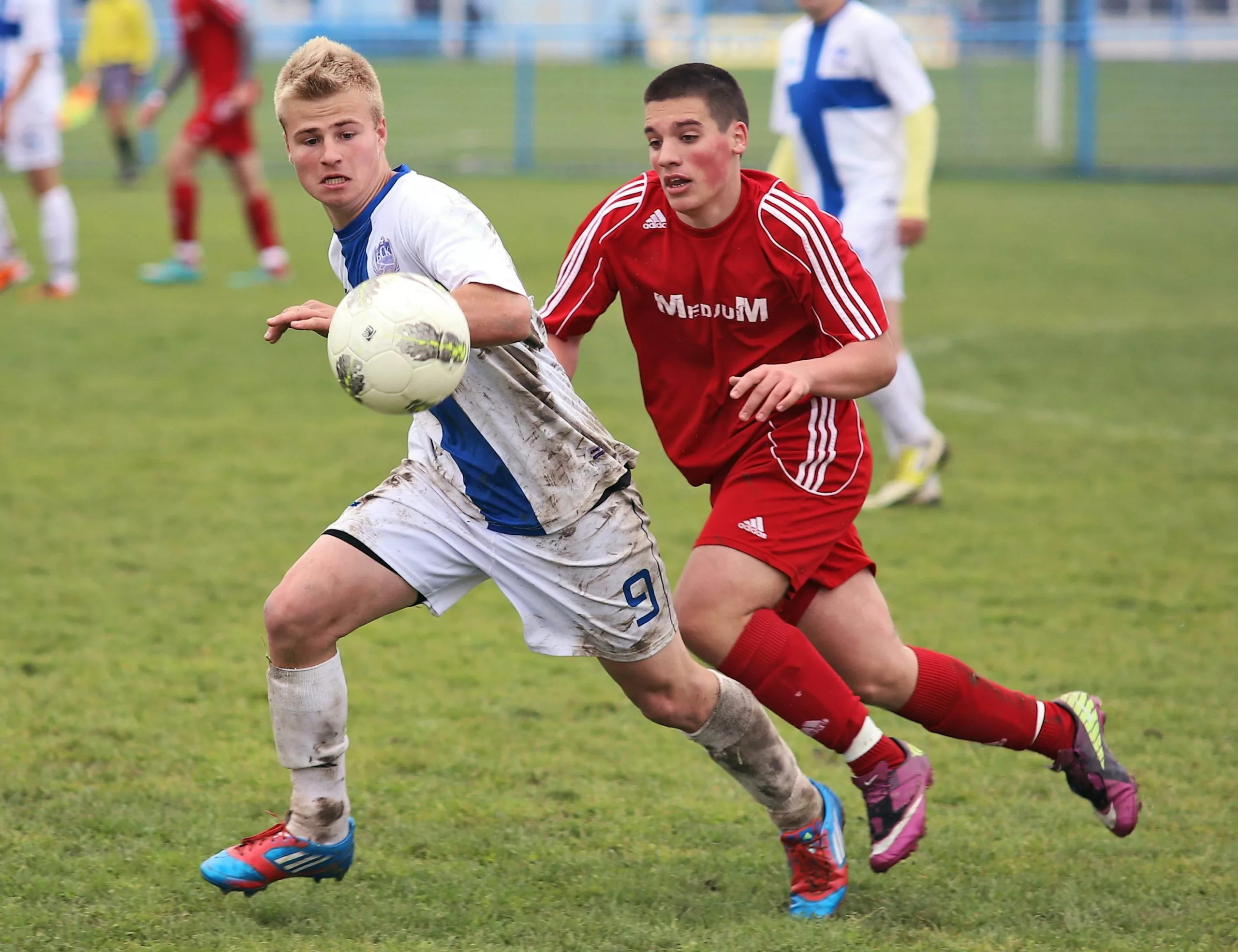
Sports Injuries:
Pulling of groin muscles is frequently seen amongst athletes and sports players. Soccer, futsal, basketball, and volleyball players have the highest groin pain and strain prevalence.7Mercurio, M., Corona, K., Galasso, O., Cerciello, S., Morris, B. J., Guerra, G., & Gasparini, G. (2022). Soccer players show the highest seasonal groin pain prevalence and the longest time loss from sport among 500 athletes from major team sports. Knee Surgery, Sports Traumatology, Arthroscopy, 30(6), 2149-2157.
Repetitive Strain:
Exposing your groin and hip region to repetitive strains can induce micro-injuries in the muscle fibers, making them prone to pulling and tearing. Activities like jumping, landing on the hip, and too much twisting can cause groin strains.
Risk Factors:
Athletes with poor training biomechanics and players with weak muscles are at the greatest risk of groin pulls. Most players suffer from a pull while training during the offseason.
The following games increase your propensity of a groin pull:
- Ice hockey
- Soccer
- Basketball
- Football
- Tennis
- Martial arts
How To Diagnose A Groin Pull?
Your doctor will diagnose a groin strain by physically examining the muscles and correlating the findings with the history. The examination is done by palpating the groin, which involves lightly pressing to check for deformities and swelling.
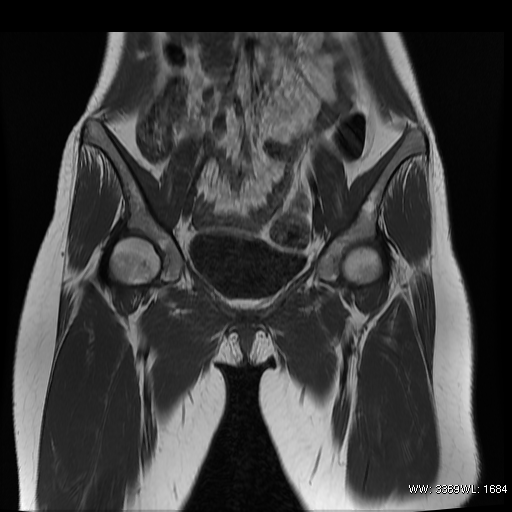
The extent of swelling and discoloration of the skin is noted. Your healthcare provider may also order imaging tests to get a clearer picture:
- Ultrasound allows the doctor to check for micro tears and associated inflammation.
- X-rays help rule out any underlying fractures or extensive damage to the groin structures.
- MRI scans provide a better visualization of tendon tears and muscle damage.
Differential Diagnosis
Groin Pull Vs. Hernia
An inguinal hernia is when an organ (belly fat or intestinal loop) bulges out in the groin region. It can be mistaken for a groin pull because both conditions present as groin pain. However, in the case of a hernia, you can easily appreciate a bump through the skin, whereas there is no bump in a groin pull. Due to the similarities in symptoms, groin pull is sometimes wrongly called “sports hernia” or “athletic pubalgia.”
Other conditions that fall under the differential diagnosis of groin pull are:
- Osteitis pubis (pubic bone inflammation)
- Labral (hip) tear
- Hip osteoarthritis
Groin Pull Treatment
Conservative treatment strategies can manage a groin pull well. The main aim of all therapeutic options is to alleviate pain and swelling and improve mobility.
Conservative Strategy:
The easiest and most effective way to treat a mild-to-moderate groin pull is to follow RICE, i.e., rest (R), ice (I), compression (C), and elevation (E).
Rest
You must take ample rest to allow the groin muscles to heal optimally. For a quick and complete recovery, you must also refrain from the activity that caused the strain.
Ice Application
The cold application helps bring down inflammation. Applying a cold pack or a frozen back of peas can reduce the swelling and allow some movement.
Compression
Applying a compression bandage reduces inflammation and alleviates other symptoms. However, due to the anatomy of the muscles, applying a bandage to the groin region can be a little tough.
Elevation
Doctors recommend keeping your legs slightly higher (above heart level) when lying down to aid in fluid drainage. You can support your legs with pillows or folded blankets.
Medicines & Support:
Non-steroid anti-inflammatory drugs (NSAIDs) are effective in alleviating pain and improving mobility. Medications like naproxen, ibuprofen, etc., are commonly prescribed. However, for severe injuries, your doctor might prescribe opioid drugs like oxycodone, etc., but only for a short period.
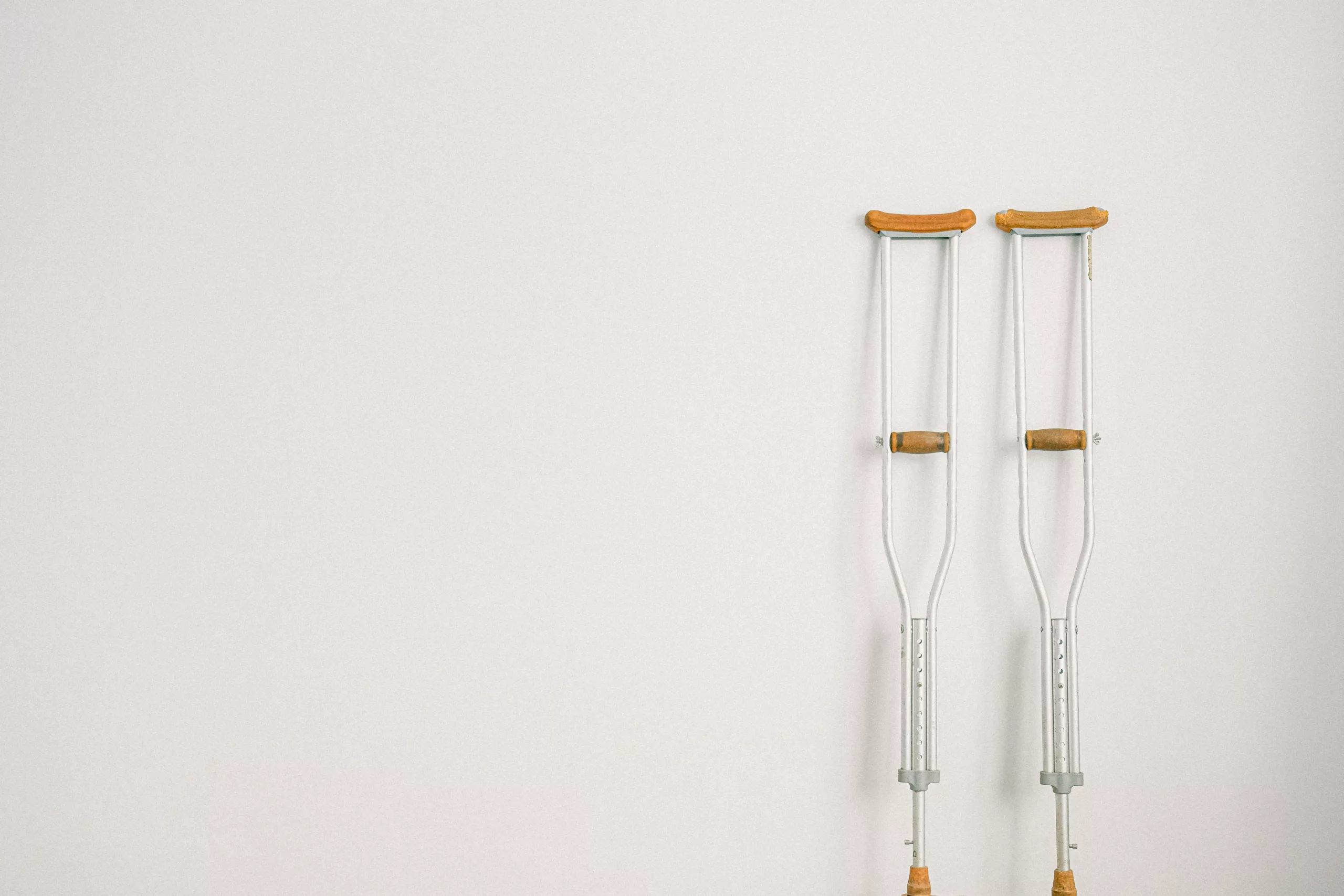
You may also need to take support while walking in the acute phase of the muscle pull. You can use crutches to distribute body weight and relieve the muscles.
Physical Therapy:
Visiting a physiotherapist can improve your symptoms. Many athletes report significant improvements in mobility and groin pain symptoms after months of physical therapy.8Everhart, J. S., Poland, S., Vajapey, S. P., Kirven, J. C., France, T. J., & Vasileff, W. K. (2020). CrossFit-related hip and groin injuries: a case series. Journal of hip preservation surgery, 7(1), 109-115. A physiotherapist will inform you of groin pull exercises and stretches that can relieve pain.
Groin Pull Exercises:
You can try any of the following exercises for your groin pull:
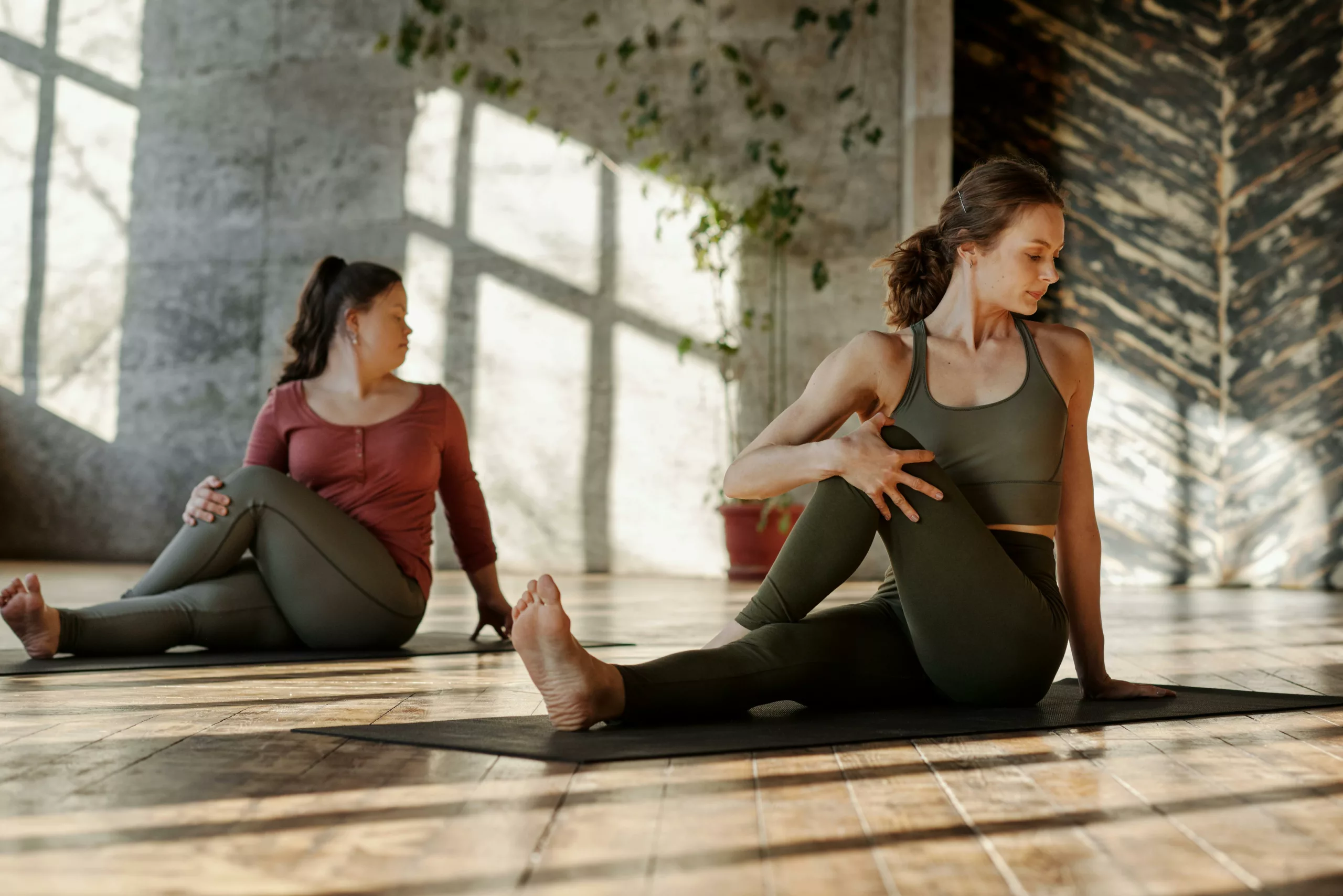
Cross-Leg Stretch
Sit down comfortably, cross one leg over the other, and press the knee (of the crossed leg) across the body. Hold this position for 10-20 seconds to open up the hip.
Standing Adductor Stretch
While standing, keep one leg under your torso while stretching the other one out. Bend the knee (under the torso) to allow stretching of the inner thigh muscles on the opposite side. Hold for 10-20 seconds. Remember to keep a straight knee of the outstretched leg.
Butterfly Stretch
Sit down (on the ground) with knees bent and feet together, grab your feet with your hands, and stretch your knees toward the ground, ensuring you don’t bounce. Feel the stretch in your inner thigh, and hold for 10-20 seconds.
Surgery:
Surgical correction is rarely chosen and is reserved for severe grade 3 groin pull cases. In this procedure, the surgeon repairs the torn muscle fibers or reattaches the detached tendons to the bones.
Groin Pull Recovery Time
Healing time varies between individuals and depends upon factors like age, fitness levels, and cause of injury. However, you can expect a few weeks before returning to normal. Based on patient experience, the generalized healing times for groin pull are:
| Groin Pull Type | Recovery Time |
| Grade 1 Mild groin pull | 2-3 weeks |
| Grade 2 Moderate groin pull | 2-3 months |
| Grade 3 Severe groin pull | Four months of even more |
Groin Strain Prevention
To prevent groin pulls in the future, you must stay active and keep your groin muscles strong. You can achieve this by regularly stretching the muscles, especially the adductor muscles. Follow proper biomechanics when lifting weights and playing hectic sports. Avoid prolonged straining of the muscles and take breaks to allow healing.
Final Word
A groin pull is a strain of any groin muscle (mostly hip adductor muscles). It is commonly seen in players and athletes due to overusing and repetitive stressing of the hip/groin. Patients experience pain, swelling, weakness, and loss of mobility. Grade 1 (mild) and 2 (moderate) groin pulls heal on their own, while grade 3 pulls require surgical intervention. It takes a few weeks to even months to recover from a groin pull. However, you can speed up the healing process by resting, applying ice and compression, and elevating the legs. Regular stretching of the muscles strengthens them and prevents recurrence.
Refrences
- 1Kerbel, Y. E., Smith, C. M., Prodromo, J. P., Nzeogu, M. I., & Mulcahey, M. K. (2018). Epidemiology of hip and groin injuries in collegiate athletes in the United States. Orthopedic journal of sports medicine, 6(5), 2325967118771676.
- 2Thorborg, K. (2023). Current Clinical Concepts: Exercise and Load Management of Adductor Strains, Adductor Ruptures, and Long-Standing Adductor-Related Groin Pain. Journal of Athletic Training, 58(7-8), 589-601.
- 3Sharma, H., Athar, S., Kholiya, K., Naqvi, S. A., Jain, K., Goyal, B., & Kachhawa, D. (2023). A groin injury in athletes: A review. Journal of Survey in Fisheries Sciences, 10(4S), 905-914.
- 4Baida, S. R., Gore, S. J., Franklyn‐Miller, A. D., & Moran, K. A. (2018). Does the amount of lower extremity movement variability differ between injured and uninjured populations? A systematic review. Scandinavian journal of medicine & science in sports, 28(4), 1320-1338.
- 5Markovic, G., Šarabon, N., Pausic, J., & Hadžić, V. (2020). Adductor muscles strength and strength asymmetry as risk factors for groin injuries among professional soccer players: A prospective study. International Journal of Environmental Research and Public Health, 17(14), 4946.
- 6Bonello, C., King, M. G., Crossley, K. M., Heerey, J. J., Scholes, M. J., Lawrenson, P., … & Semciw, A. I. (2023). The association between hip/groin pain and hip strength in football players: An exploratory analysis of the FORCe cohort. Journal of Science and Medicine in Sport, 26(9), 471-475.
- 7Mercurio, M., Corona, K., Galasso, O., Cerciello, S., Morris, B. J., Guerra, G., & Gasparini, G. (2022). Soccer players show the highest seasonal groin pain prevalence and the longest time loss from sport among 500 athletes from major team sports. Knee Surgery, Sports Traumatology, Arthroscopy, 30(6), 2149-2157.
- 8Everhart, J. S., Poland, S., Vajapey, S. P., Kirven, J. C., France, T. J., & Vasileff, W. K. (2020). CrossFit-related hip and groin injuries: a case series. Journal of hip preservation surgery, 7(1), 109-115.

